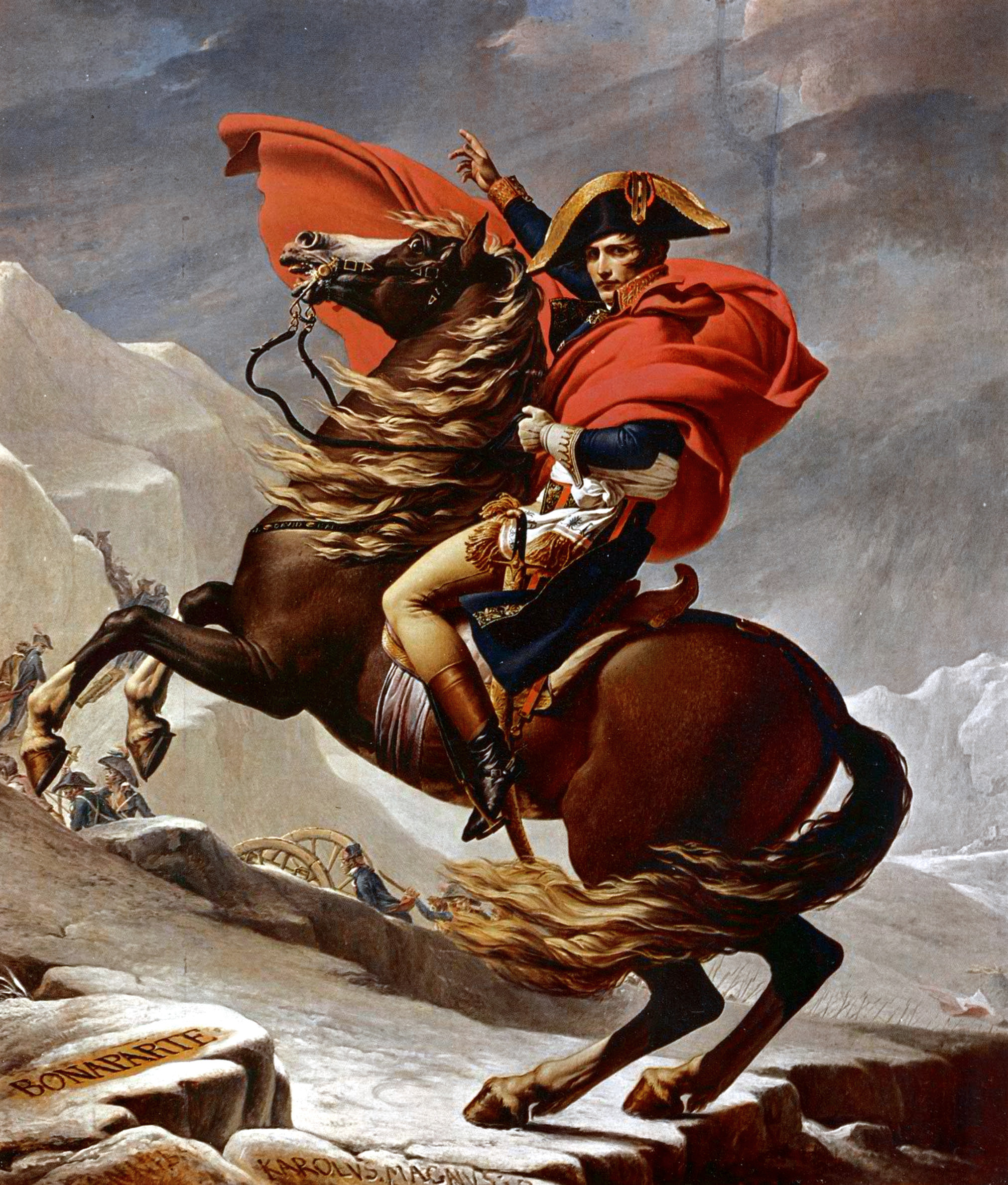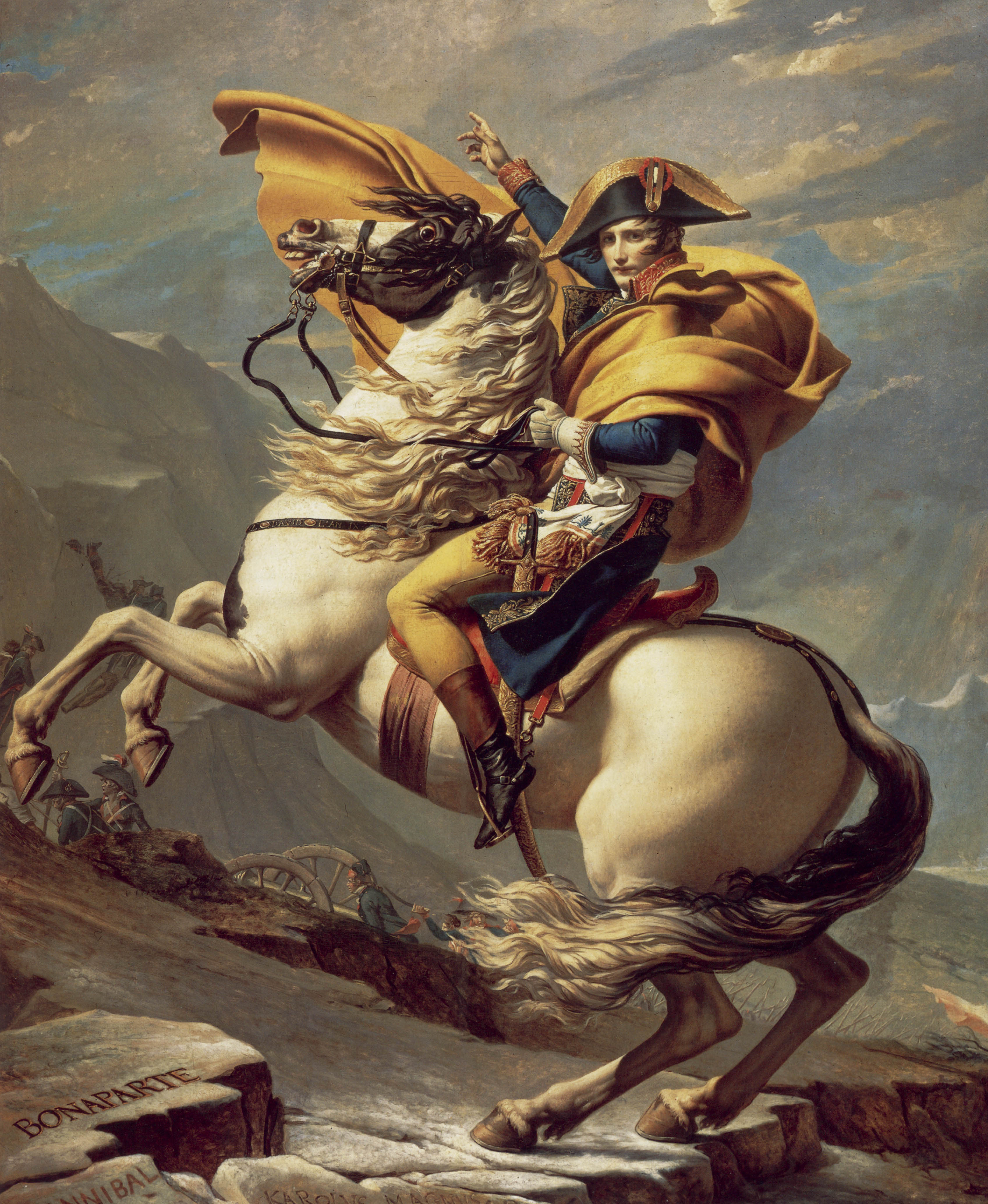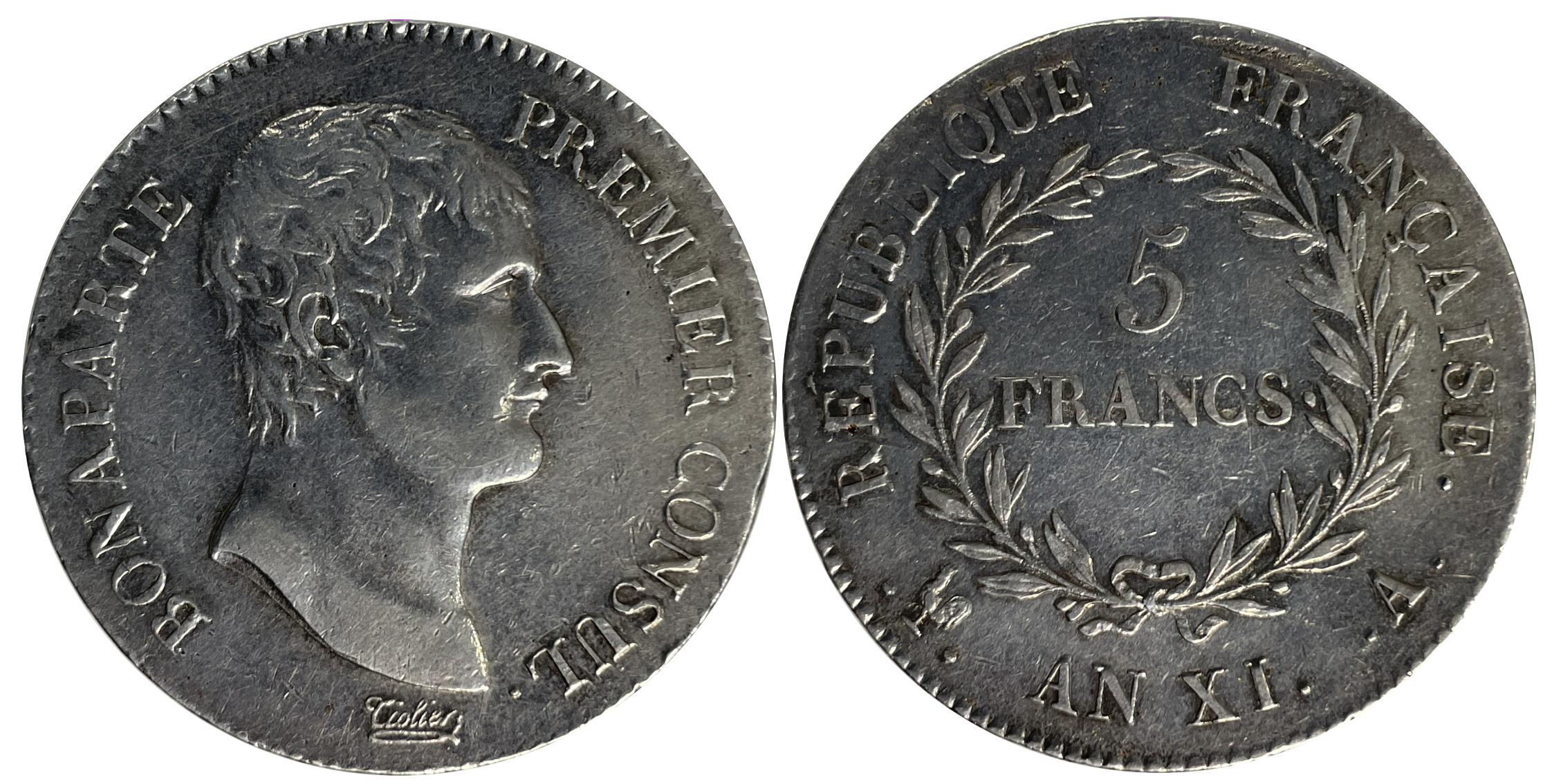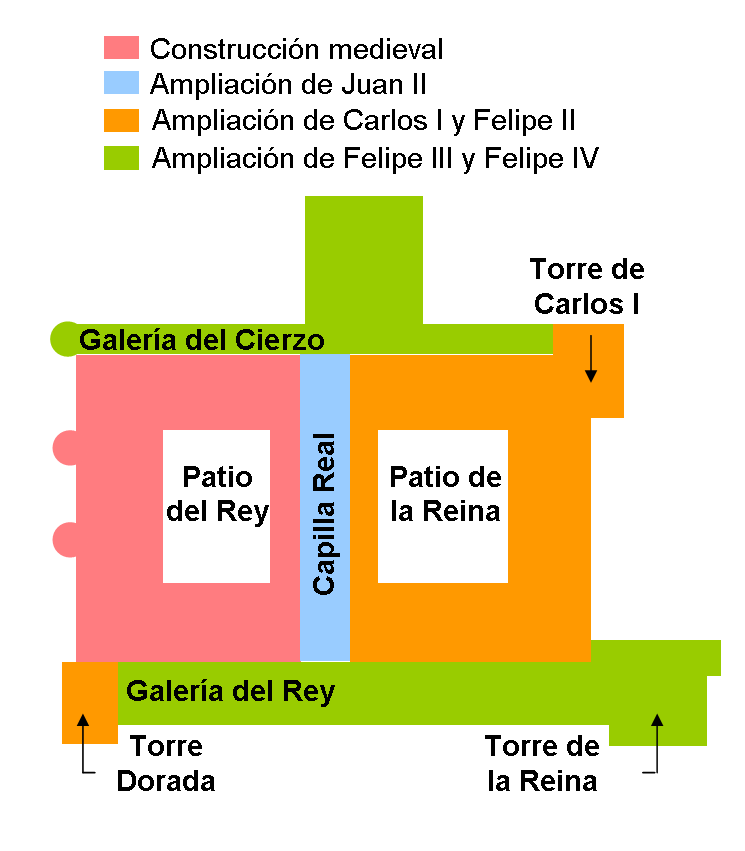|
Napoleon Crossing The Alps
''Napoleon Crossing the Alps'' (also known as ''Napoleon at the Saint-Bernard Pass'' or ''Bonaparte Crossing the Alps''; listed as ''Le Premier Consul franchissant les Alpes au col du Grand Saint-Bernard'') is a series of five oil on canvas equestrian portraits of Napoleon Bonaparte painted by the French artist Jacques-Louis David between 1801 and 1805. Initially commissioned by the King of Spain, the composition shows a strongly idealized view of the real crossing that Napoleon and his army made across the Alps through the Great St Bernard Pass in May 1800. It has become one of the most commonly reproduced images of Napoleon. Background Having taken power in France during the 18 Brumaire on 9 November 1799, Napoleon was determined to return to Italy to reinforce the French troops in the country and retake the territory seized by the Austrians in the preceding years. In the spring of 1800 he led the Reserve Army across the Alps through the Great St Bernard Pass. The ... [...More Info...] [...Related Items...] OR: [Wikipedia] [Google] [Baidu] |
Jacques-Louis David
Jacques-Louis David (; 30 August 1748 – 29 December 1825) was a French painter in the Neoclassical style, considered to be the preeminent painter of the era. In the 1780s, his cerebral brand of history painting marked a change in taste away from Rococo frivolity toward classical austerity and severity and heightened feeling, harmonizing with the moral climate of the final years of the Ancien Régime. David later became an active supporter of the French Revolution and friend of Maximilien Robespierre (1758–1794), and was effectively a dictator of the arts under the French Republic. Imprisoned after Robespierre's fall from power, he aligned himself with yet another political regime upon his release: that of Napoleon, the First Consul of France. At this time he developed his Empire style, notable for its use of warm Venetian colours. After Napoleon's fall from Imperial power and the Bourbon revival, David exiled himself to Brussels, then in the United Kingdom of the Netherlands ... [...More Info...] [...Related Items...] OR: [Wikipedia] [Google] [Baidu] |
Battle Of Marengo (1800)
The Battle of Marengo was fought on 14 June 1800 between French forces under the First Consul Napoleon Bonaparte and Austrian forces near the city of Alessandria, in Piedmont, Italy. Near the end of the day, the French overcame General Michael von Melas's surprise attack, drove the Austrians out of Italy and consolidated Bonaparte's political position in Paris as First Consul of France in the wake of his coup d'état the previous November. Surprised by the Austrian advance toward Genoa in mid-April 1800, Bonaparte hastily led his army over the Alps in mid-May and reached Milan on 2 June. After cutting Melas's line of communications by crossing the River Po and defeating '' Feldmarschallleutnant'' (FML) Peter Karl Ott von Bátorkéz at Montebello on 9 June, the French closed in on the Austrian Army, which had massed in Alessandria. Deceived by a local double agent, Bonaparte dispatched large forces to the north and the south, but the Austrians launched a surprise attack on ... [...More Info...] [...Related Items...] OR: [Wikipedia] [Google] [Baidu] |
Milan
Milan ( , , Lombard language, Lombard: ; it, Milano ) is a city in northern Italy, capital of Lombardy, and the List of cities in Italy, second-most populous city proper in Italy after Rome. The city proper has a population of about 1.4 million, while its Metropolitan City of Milan, metropolitan city has 3.26 million inhabitants. Its continuously built-up List of urban areas in the European Union, urban area (whose outer suburbs extend well beyond the boundaries of the administrative Metropolitan cities of Italy, metropolitan city and even stretch into the nearby country of Switzerland) is the fourth largest in the EU with 5.27 million inhabitants. According to national sources, the population within the wider Milan metropolitan area (also known as Greater Milan), is estimated between 8.2 million and 12.5 million making it by far the List of metropolitan areas of Italy, largest metropolitan area in Italy and List of metropolitan areas in Europe, one of ... [...More Info...] [...Related Items...] OR: [Wikipedia] [Google] [Baidu] |
Royal Palace Of Milan
The Royal Palace of Milan (Italian: ''Palazzo Reale di Milano'') was the seat of government in the Italian city of Milan for many centuries. Today, it serves as a cultural centre and it is home to international art exhibitions. It spans through an area of 7,000 square meters and it regularly hosts modern and contemporary art works and famous collections in cooperation with notable museums and cultural institutions from across the world. More than 1,500 masterpieces are on display annually. It was originally designed to include two courtyards but these were later dismantled to make room for the Duomo. The Palazzo is located to the right of the Duomo's facade, opposite to Galleria Vittorio Emanuele II. The facade of the Palazzo creates a recess in Piazza del Duomo which functions as a courtyard, known as the ''Piazzetta Reale'' (literally, a "Small Royal Square"). The famous ''Hall of Caryatids'' can be found on the main floor of the building, heavily damaged by World War II's ... [...More Info...] [...Related Items...] OR: [Wikipedia] [Google] [Baidu] |
Les Invalides
The Hôtel des Invalides ( en, "house of invalids"), commonly called Les Invalides (), is a complex of buildings in the 7th arrondissement of Paris, France, containing museums and monuments, all relating to the military history of France, as well as a hospital and a retirement home for war veterans, the building's original purpose. The buildings house the Musée de l'Armée, the military museum of the Army of France, the Musée des Plans-Reliefs, and the Musée d'Histoire Contemporaine. The complex also includes the former hospital chapel, now national cathedral of the French military, and the adjacent former Royal Chapel known as the , the tallest church building in Paris at a height of 107 meters. The latter has been converted into a shrine of some of France's leading military figures, most notably the Napoleon's tomb, tomb of Napoleon. History Louis XIV of France, Louis XIV initiated the project by an order dated 24 November 1670, as a home and hospital for aged and di ... [...More Info...] [...Related Items...] OR: [Wikipedia] [Google] [Baidu] |
Château De Saint-Cloud
The Château de Saint-Cloud was a château in France, built on a site overlooking the Seine at Saint-Cloud in Hauts-de-Seine, about west of Paris. On the site of the former palace is the state-owned Parc de Saint-Cloud. The château was expanded by Phillipe of France, Duke of Orléans in the 17th century, and by Marie Antoinette in the 1780s. After occupation by Napoleon I and Napoleon III, it was destroyed in 1870 during the Franco-Prussian War. History Hôtel d'Aulnay The Hôtel d'Aulnay on the site was expanded into a château in the 16th century by the Gondi banking family. The Gondis stemmed from a family of Florentine bankers established at Lyon in the first years of the 16th century, who had arrived at the court of France in 1543 in the train of Catherine de' Medici. In the 1570s, the Queen offered Jérôme de Gondi a dwelling at Saint-Cloud, the ''Hôtel d'Aulnay'', which became the nucleus of the château with a right-angled wing that looked out on a terrace. ... [...More Info...] [...Related Items...] OR: [Wikipedia] [Google] [Baidu] |
French Consulate
The Consulate (french: Le Consulat) was the top-level Government of France from the fall of the Directory in the coup of 18 Brumaire on 10 November 1799 until the start of the Napoleonic Empire on 18 May 1804. By extension, the term ''The Consulate'' also refers to this period of French history. During this period, Napoleon Bonaparte, as First Consul (), established himself as the head of a more authoritarian, autocratic, and centralized republican government in France while not declaring himself sole ruler. Due to the long-lasting institutions established during these years, Robert B. Holtman has called the Consulate "one of the most important periods of all French history." Napoleon brought authoritarian personal rule which has been viewed as military dictatorship. Fall of the Directory government French military disasters in 1798 and 1799 had shaken the Directory, and eventually shattered it in November 1799. Historians sometimes date the start of the politica ... [...More Info...] [...Related Items...] OR: [Wikipedia] [Google] [Baidu] |
French Revolution
The French Revolution ( ) was a period of radical political and societal change in France that began with the Estates General of 1789 and ended with the formation of the French Consulate in November 1799. Many of its ideas are considered fundamental principles of liberal democracy, while phrases like '' liberté, égalité, fraternité'' reappeared in other revolts, such as the 1917 Russian Revolution, and inspired campaigns for the abolition of slavery and universal suffrage. The values and institutions it created dominate French politics to this day. Its causes are generally agreed to be a combination of social, political and economic factors, which the ''Ancien Régime'' proved unable to manage. In May 1789, widespread social distress led to the convocation of the Estates General, which was converted into a National Assembly in June. Continuing unrest culminated in the Storming of the Bastille on 14 July, which led to a series of radical measures by the Assemb ... [...More Info...] [...Related Items...] OR: [Wikipedia] [Google] [Baidu] |
Royal Palace Of Madrid
The Royal Palace of Madrid ( es, Palacio Real de Madrid) is the official residence of the Spanish royal family at the city of Madrid, although now used only for state ceremonies. The palace has of floor space and contains 3,418 rooms. It is the largest royal palace in Europe. The palace is now open to the public, except during state functions, although it is so large that only a selection of rooms are on the visitor route at any one time, the route being changed every few months. An admission fee of €13 is charged; however, at some times it is free. The palace is owned by the Spanish state and administered by the Patrimonio Nacional, a public agency of the Ministry of the Presidency. The palace is on Calle de Bailén ("Bailén Street") in the western part of downtown Madrid, east of the Manzanares River, and is accessible from the Ópera (Madrid Metro), Ópera metro station. Felipe VI and the royal family do not reside in the palace, choosing instead the Palace of Zarzuela in E ... [...More Info...] [...Related Items...] OR: [Wikipedia] [Google] [Baidu] |
Charles-Jean-Marie Alquier
Charles-Jean-Marie Alquier (13 October 1752 – February 1826) was a French diplomat. He served as French minister in several European capitals. Life Alquier was born in the village of Talmont, near Les Sables d'Olonne, in La Vendée. He was mayor of Rochelle in 1789, and was elected by the district of Aunis to the Estates-General. He was a member of the Constituent Assembly, and served on several committees; he became one of the secretaries of the Constituent Assembly. When the Assembly adjourned, he became President of the Criminal Tribunal of the Department of Seine et Oise, and was sent as their representative to the National Convention in 1792. In that Convention, he voted for the death of King Louis XVI. He assisted in the organization of Holland after its conquest by the French armies. In 1795 he was appointed Secretary to the Council of Ancients, one of the organs of the Constitution of the Year III under the Directorate. He began his diplomatic career in 1798 ... [...More Info...] [...Related Items...] OR: [Wikipedia] [Google] [Baidu] |
Francisco Goya
Francisco José de Goya y Lucientes (; ; 30 March 174616 April 1828) was a Spanish romantic painter and printmaker. He is considered the most important Spanish artist of the late 18th and early 19th centuries. His paintings, drawings, and engravings reflected contemporary historical upheavals and influenced important 19th- and 20th-century painters. Goya is often referred to as the last of the Old Masters and the first of the moderns. Goya was born to a middle-class family in 1746, in Fuendetodos in Aragon. He studied painting from age 14 under José Luzán y Martinez and moved to Madrid to study with Anton Raphael Mengs. He married Josefa Bayeu in 1773. Their life was characterised by a series of pregnancies and miscarriages, and only one child, a son, survived into adulthood. Goya became a court painter to the Spanish Crown in 1786 and this early portion of his career is marked by portraits of the Spanish aristocracy and royalty, and Rococo-style tapestry cartoons ... [...More Info...] [...Related Items...] OR: [Wikipedia] [Google] [Baidu] |
Manuel Godoy
Manuel Godoy y Álvarez de Faria, Prince of the Peace, 1st Duke of Alcudia, 1st Duke of Sueca, 1st Baron of Mascalbó (12 May 17674 October 1851) was First Secretary of State of Spain from 1792 to 1797 and from 1801 to 1808. He received many titles, including that of ('Prince of the Peace'), by which he is widely known. Godoy is best known for his diplomacy with Napoleon. In 1804 Godoy was elected a member of the American Philosophical Society in Philadelphia, Pennsylvania. Godoy came to power at a young age as the favourite of King Charles IV and Queen Maria Luisa. Despite multiple disasters, Godoy maintained power. Many Spanish leaders blamed him for the disastrous war with Britain that cut off the Spanish Empire and ruined its finances. Crown Prince Ferdinand, Prince of Asturias, led an attempt to oust Godoy in 1807. Godoy's unpopularity culminated in the Tumult of Aranjuez in March 1808, which forced him into exile. Birth and family background Godoy was born in Bada ... [...More Info...] [...Related Items...] OR: [Wikipedia] [Google] [Baidu] |




_-_Stanza_da_letto_dell'Imperatore_nel_palazzo_Reale_a_Milano_(17_ott_1875)_-_Da_Illustraz_Italiana.jpg)





